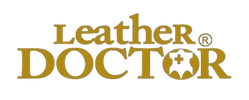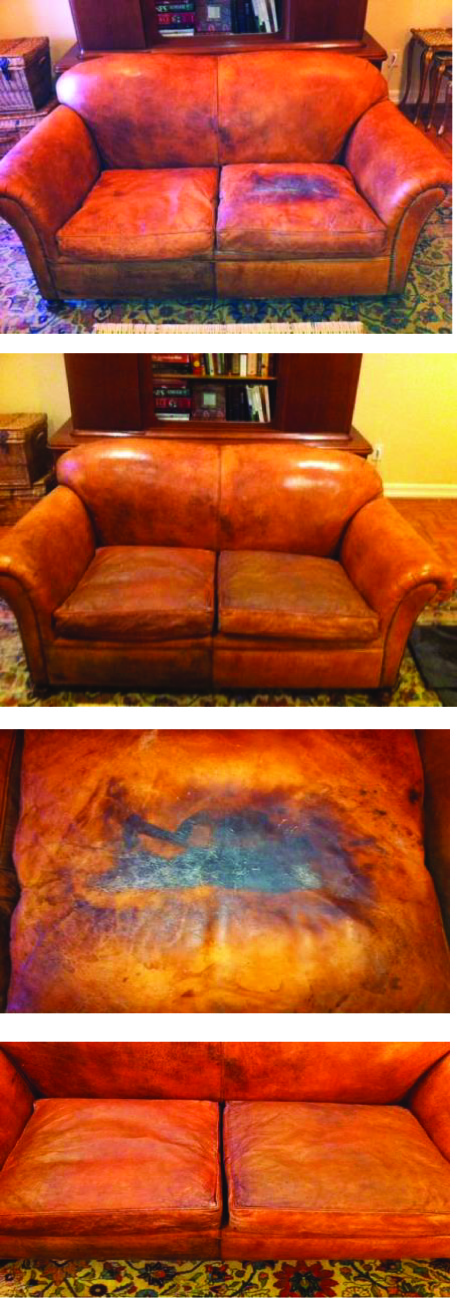Leather Urine Odor Killer 2.1 by Leather Doctor® eliminates, neutralizes, pH balances, and suspends the ammonia and alkaline phosphorus salt found in urine Leather-Safe™.
Urine 2.1 is a professional-grade, Leather-Safe™ decontamination solution that neutralizes urine odors and prevents damaged to leather caused by urine exposure.
![]() How Does Urine 2.1 Work?
How Does Urine 2.1 Work?
- Neutralizes ammonia and alkaline salts that cause 'reverse-tanning'.
- Corrects the pH back to the healthy acidic range (3.0-5.0) to prevent denaturing.
- Odor dissipates as the leather dries, thanks to the chemical reaction with the salts.
What Types of Leather Does Urine 2.1 Work On?
Urine 2.1 is Leather-Safe™ and effective on all leather types, including:
- Vachetta
- Nubuck
- Pigmented
- Semi-Aniline
- Aniline
- Hair-on-hide
- Wool skin
- Veg-Tan
![]() Understanding Urine Contamination on Leather
Understanding Urine Contamination on Leather
What is Urine?
A compound waste fluid containing:
- Urochrome (causes yellowing)
- Uric acid (causes staining)
- Ammonium salts (causes odor and damage)
When Does Urine Odor Develop?
- As urine ferments due to atmospheric bacteria, it releases:
- Putrid odor (from protein breakdown)
- Ammonia odor (from ammonium salt)
How Urine Damages Leather:
- Shifts leather pH from 3.0 - 5.0 to 10.0 (very alkaline)
- Denatures the leather’s amphoteric protein fibers
- Tanning agents, fatliquor, and dyestuff are repelled
- Leather reverts to rawhide: becomes stiff, darkened, tacky, or slimy
What is the Effect of an Aged Urine?
- A typical appearance of an aged or compounded contamination is a darkening effect from the fugitive tanning agents and a whitening effect from the fatliquor.
- Fugitive dyestuff or bleeding is only apparent from a white towel detection and yellowing from the urochrome.
- The denaturing or reverting to the rawhide effect of the leather is further confirmed by tackiness or in the worst-case sliminess in the presence of moisture.
- The leach-out fatliquor results in stiffness and fugitive dyestuff results in discolouration.
How to Decontaminate Urine Stain?
- A systematic sequence of decontamination approach includes surface residue removal with Urine 1.5, rinse with Acidifier 2.0 recharging the protein fiber ionic positive (+ve), and neutralizing the ammonium salt with Urine 2.1.
How to Control Bacteria and Mold Growth?
- Utilizing such a low pH treatment retards bacteria activities from off-gassing putrid odors, a natural pH control without the need to use bactericide or fungicide for mold prevention.
- Therefore, urine is a type of soiling that will require a biochemistry approach to decontaminate it.
- In extreme cases Mold 3.6 is recommended
How to Purge Urine Contamination?
- Urine contamination is purged with Hydrator 3.3 which has ionic positive charging abilities, and active surfactants essential for foreign water movement within the inter-fibrillar spaces to redistribute the leather constituents and purge urine contamination to the surface.
What is the Final Wet Cleaning Process?
- The final Hydrator 3.3 wet cleaning process within the leather structure is to remove the suspended yellowish compound through white wettable tissue paper as an extension of the leather surface in the wicking process as the leather dries naturally.
When to Commence Fatliquoring?
- Fatliquor reconditioning or replenishing commenced once the dried wettable tissue paper shows without a trace of the urine stain.
How Fatliquor Works?
- Fatliquor 5.0 emulsified fat and oil-encased water molecule breaks free when hydrogen bond attraction takes place between the fat and oil with the protein fiber, leaving a breathing space essential for leather transpiration to function naturally.
- The fat plumps the leather with fullness from easily collapsing into creases and wrinkles during stress or flex, while the oil lubricates the fibers so that they slide over one another like millions of interconnecting hinges with smoothness.
- One important unique characteristic of leather is suppleness with strength and much depends on the fatliquor, in this holistic approach to effective leather urine decontamination and restoration.
- For severe neglected cases with finishes damages as seen in this picture, refinishing commences after leather suppleness restoration.
How to Prepare for Cleaning - Instruction
- Dry soil is removed use a Eraser 4 for smooth leather and nubuck, and use Eraser 5 for suede.
- The surface soiling is removed first using Urine 1.5 followed by Acidifier 2.0 with appropriate bush agitation and towel extraction.
How to Apply - Instruction
- Apply and saturate Urine 21 sufficiently deeper than the urine penetration with the help of brush agitation.
- Dwell for 10 to 30 minutes for a chemical reaction then extract until the towel shows clean.
- Rinse until towel shows clean to a healthy squeak with Rinse 3.0 or Acidifier 2.0.
- Control mold activities with Mold 3.6 as an option in extreme cases.
Related Products:
- To remove foreign contamination from within the leather structure, use Hydrator 3.3.
- To rejuvenate to soften and strengthen the leather structure, use Fatliquor 5.0 or Fatliquor 5.0 Plus.
- To impart a classical leather scent to mask the finish, use Protector B Plus, or Protector W Plus.
See our help and support forum: http://www.leathercleaningrestorationforum.com/forum/showthread.php?8144-Aniline-Dog-Urine-Stain-How-to-salvage-this-1940%92s-French-Aniline-Leather-Sofa-set-from-dog-peed
Leather Urine Damage Restoration and Refinishing with Urine 2.1 system
Your opinions and insights are precious and will help us to improve our writing to solve your leather problem more efficiently.
Updated August 30, 2024 | May 12, 2025 | Aug 2, 2025 by Roger Koh.









